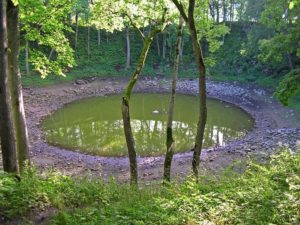World 🢖 Asia 🢖 Russia 🢖 Sakha Republic
Impact craters 🢔 Geological wonders 🢔 Categories of wonders
Wonder
Macha crater field
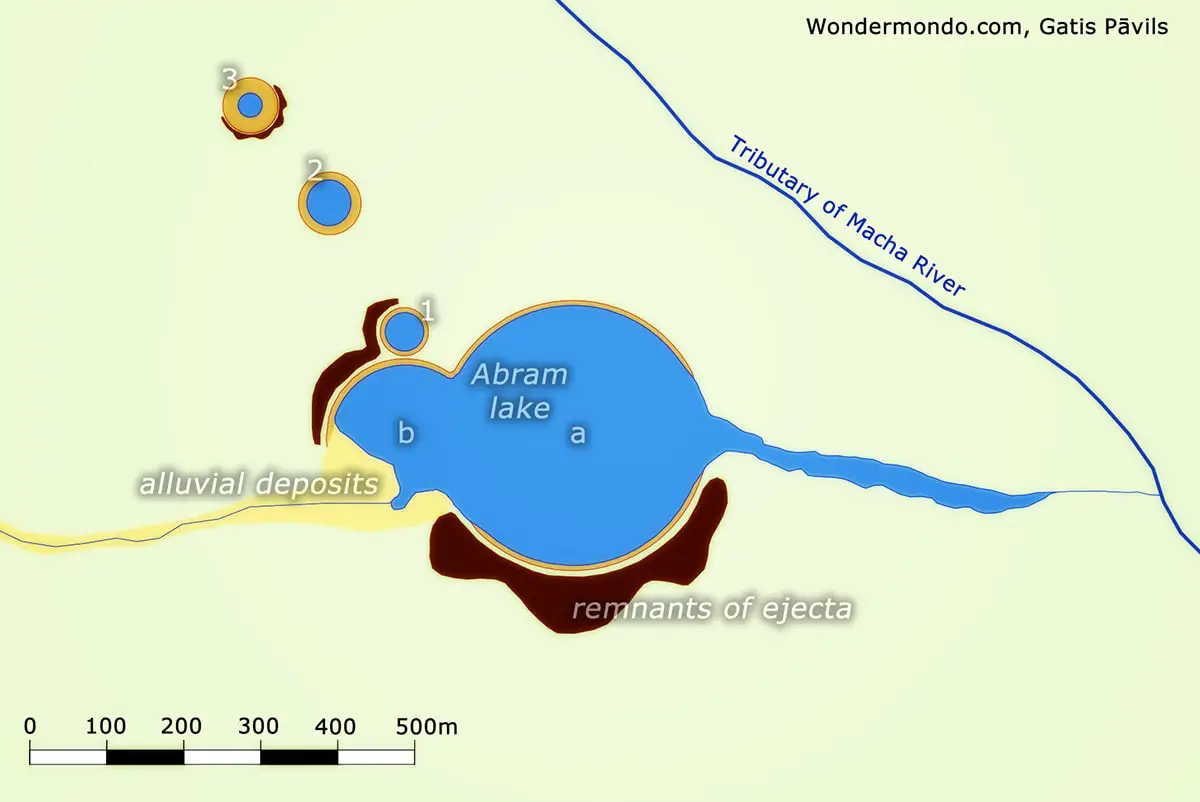
 In short
In short
The impressive Macha crater field belongs to the best examples of recent bombardment with iron meteorites. These surprisingly fresh looking craters were formed approximately 7,300 years ago.
 40.8%
40.8%
GPS coordinates
Name in Russian
Diameter
Depth
Age
Map of the site
If you see this after your page is loaded completely, leafletJS files are missing.
 In detail
In detail
Small lakes at the tributary of Macha river were well known, but only in the 1980s, during an aerial survey, it was noticed that this group of small lakes has surprisingly round form and could be formed by meteorite impact.
The first description of these craters was made in 1984 by Ukrainian scientists Gurov E.P. and Gurova E.P. Today the meteoritic origin of these craters is proved.
In total in this area are five craters. The two largest ones (diameter – 300 and 200 m) form the pear-shaped Abram Lake. The eastern crater (marked with b on the map) is partly filled with alluvial deposits.
The northernmost crater (No.3. on the map) is approximately 20 m deep. It has no lake on the bottom, just a small mire.
Crater No.2. has a round lake and very steep and fresh-looking, sandy slopes around the lake.
Crater No.1. is almost united with the largest crater – Abram Lake.
Macha craters have formed in Quaternary sand and Late Proterozoic sedimentary rocks.
Age of craters has been determined, based on the analysis of charred wood in the walls of ejecta around the craters. Additional proof of meteoritic origin is planar deformation in sand particles.
Small, metal-bearing samples have been found as well – analysis shows that the composition of this material is comparable to the particles of the Tunguska event.
It is assumed that craters were formed by an iron meteorite, exploding with a 150 kT yield.
Macha crater field is included in the following article:
 Linked articles
Linked articles
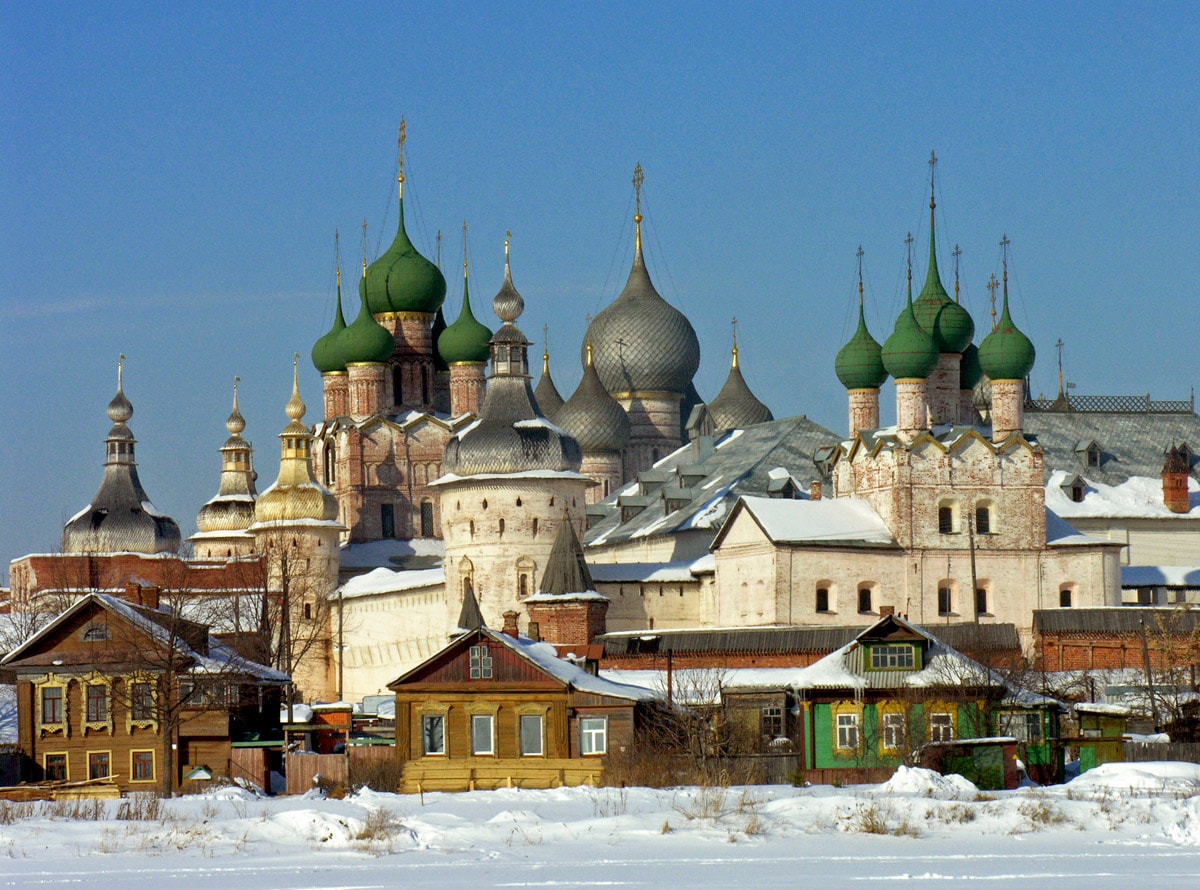
Wonders of Russia
The largest country in the world, Russia, is associated in the minds of many people with the onion domes of Orthodox churches and the massive walls of the Moscow Kremlin. But besides the unique architecture, Russia offers many more unusual and exciting attractions.
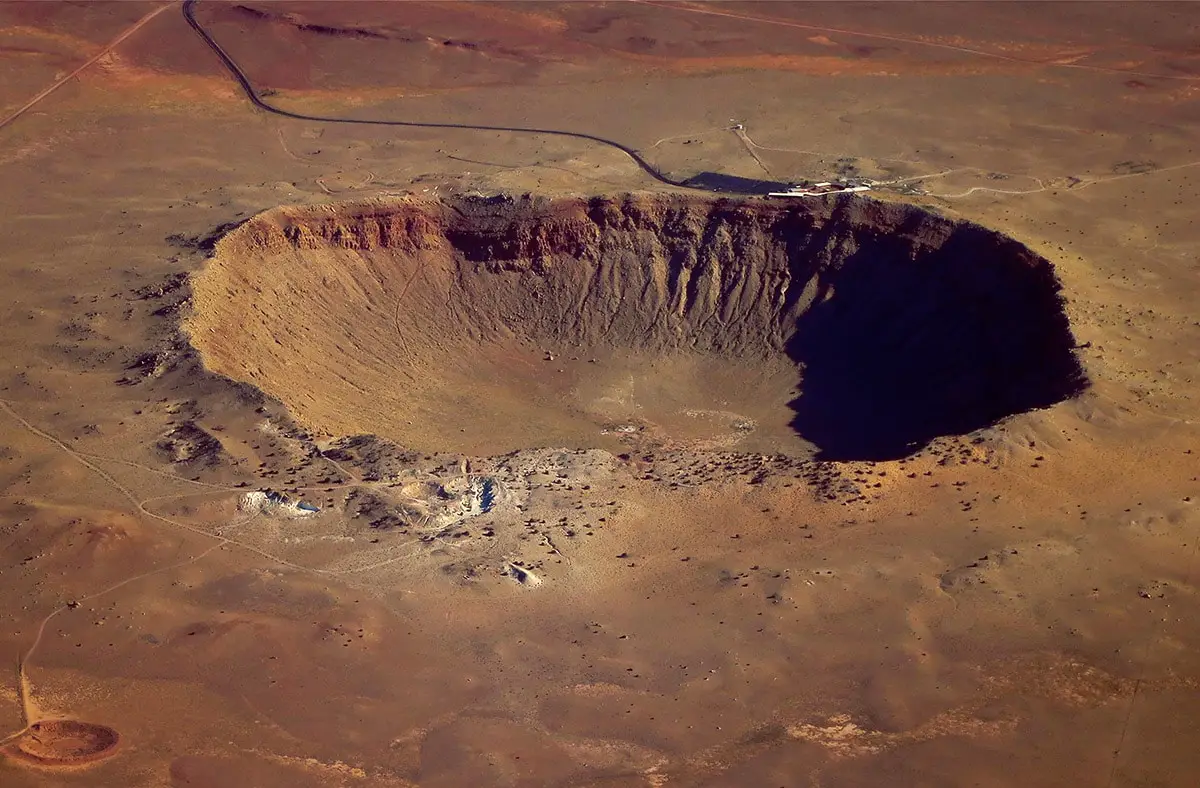
Impact craters
There are many pieces of solid matter flying around in space. And VERY frequently they fall on the surface of the Earth. There are estimates that every year on Earth fall 18,000 – 84,000 meteorites larger than 10 grams: e.g. one meteorite every 6 – 30 minutes.
This category includes outstanding impact craters – detectable scars on the surface of Earth left by a body coming from outer space. The category includes also meteorites – natural objects from outer space.
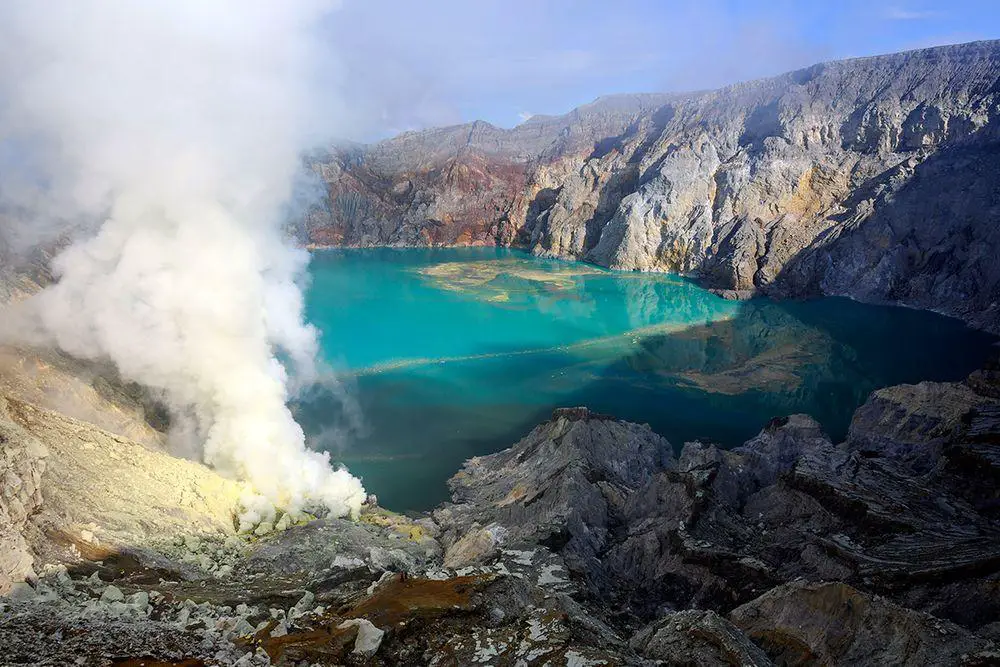
Lakes and streams
There are many factors that can make lakes, sea bays, or rivers unusual. Some lakes have unusual chemical properties and even do not contain water at all – such as lava lakes. Others may have unusual animals living in them or… legends about such animals.
 Recommended books
Recommended books
Sites of Impact: Meteorite Craters Around the World
The best-preserved impact sites are often difficult to access – buried under ice, obscured by foliage, or baking in desert climes. These desolate landscapes are connected to another place outside of our world, and for photographer Stan Gaz they are sites of pilgrimage – steps in a journey begun as a curious young boy accompanying his father on geological expeditions, and culminating in a six-year journey traveling the globe in search of these sites, much of that time spent leaning his medium format camera out of an open-sided helicopter.
Rocks from Space: Meteorites and Meteorite Hunters
This popular nontechnical introduction to the fascinating world of meteorites, asteroids, comets, and impact craters is now even better! With more than 50 new photographs and updated illustrations, new and expanded appendixes, and some fun cosmic humor, Rocks from Space, Second Edition, journeys into the last frontier for close-up looks at the latest astronomical discoveries.

